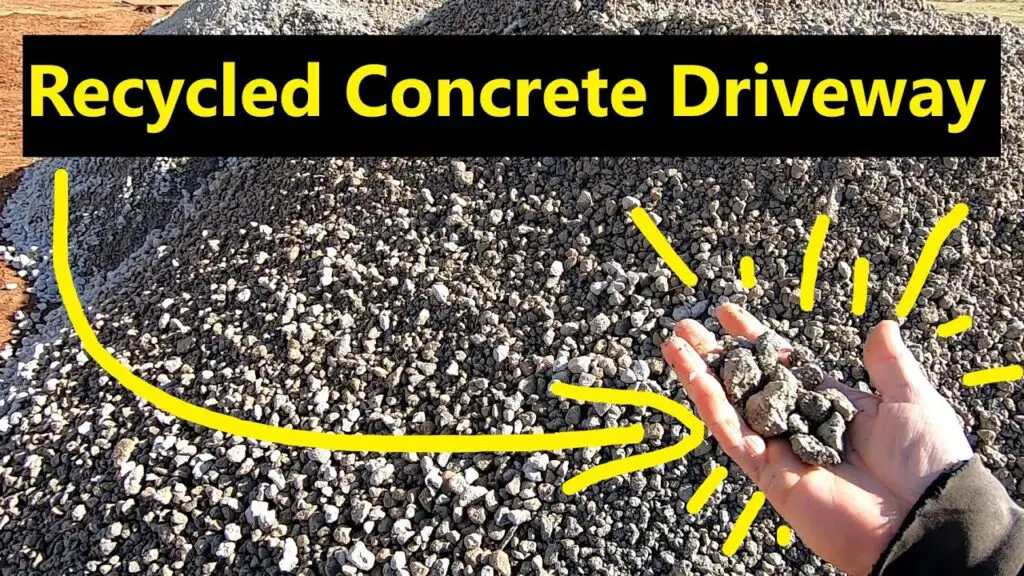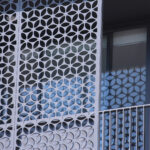Yes! Without a doubt, crushed concrete is a better option than gravel for your driveways. It is a more eco-friendly approach, besides being affordable. While having the old damaged concrete sitting around, you can use it for a better purpose. It will not just reduce the requirement of new materials but will also help free up some space in landfills.
In certain situations, crushed concrete can be a preferable alternative to gravel for constructing driveways. However, it’s important to note that gravel may also offer advantages in terms of both aesthetics and functionality, depending on the specific environment and requirements. Gaining a comprehensive understanding of the fundamental distinctions between gravel and crushed concrete can assist numerous property owners in selecting the optimal material for their driveways.

Which one is better
Crushed concrete is a recycled material composed of asphalt debris, commonly utilized for constructing pathways such as walkways and driveways. On the other hand, gravel or crushed stone is another popular material used for driveways. While both options are suitable for creating driveways, they offer distinct advantages and disadvantages to property owners.
Advantage of Using Gravel
Permeability
It is important to note that gravel consists of various rock fragments that typically do not create a uniform appearance. However, this composition promotes permeability for the driveway, allowing water to pass through instead of accumulating on the surface. This characteristic helps prevent issues such as mold and stains.
Ease of Maintenance
Generally, regular maintenance is adequate to preserve the visual and functional qualities of a gravel driveway. Using a gravel rake regularly is usually enough to keep the surface well maintained. In the event that holes do develop, they are relatively simple to fix.
Availability of Different Choices
When it comes to driveways, property owners have the flexibility to select from various types of gravel. Basalt, limestone, and sandstone are among the commonly used options. However, there are also alternative choices available, such as glow-in-the-dark gravel, which provides enhanced visibility during nighttime for drivers and pedestrians without the need for costly lighting installations.
Installation procedure
The installation process for gravel driveways is typically less labor-intensive compared to crushed concrete driveways. Here is a brief overview of the steps involved in setting up a gravel driveway:
- Use stakes to outline the path of the driveway.
- Remove any topsoil or grass from the designated area.
- Level the ground along the pathway.
- Spread and compact the gravel material.
- Add an additional layer of gravel to enhance the driveway’s durability.
- Shape the gravel driveway according to desired specifications.
Disadvantages of using Gravel
Gravel Top-ups
Gravel driveways, due to their loose composition, offer permeability but can be vulnerable to strong winds and heavy rainfall. Therefore, properties in regions with frequent wet or windy weather may require regular maintenance and topping up of gravel driveways to ensure their durability and functionality.
Difficult for Snowplow Equipment
Compared to other driveway material options, the uneven surface of gravel makes snowplowing more difficult. When scraping or snowplowing a gravel driveway, there is a higher likelihood of removing some of the gravel material from the surface.
Like Us on Facebook!
Advantages of using Crushed Stone
Economical
The cost for property owners to acquire crushed concrete is typically around $6 to $14 per ton, whereas gravel often requires a higher expenditure ranging from $10 to $50 per ton.
Subscribe Us on YouTube!
Environmental Friendly
Crushed concrete is commonly regarded as a recyclable material, providing homeowners with the option to dismantle and dispose of their crushed concrete driveways at certified recycling plants. These facilities process the material into pulverized form, enabling other property owners to reuse it instead of it being sent to landfills.
Lower Maintenance Cost
Repairing specific areas on crushed concrete driveways typically does not involve costly repair work, and professional services are often not necessary. In many cases, simply topping over the surface layer is sufficient to fix holes and ruts on these driveways.
Disadvantages of using Crushed Stone
Difficult to install
The setting up path for driveway by the use of gravel is an easy job as compared to installation of concrete driveway. The cost of contractual price increase due to increase in cost of overhead leading to incorporation of heavy machinery like, wheelbarrow or cement truck.
Little or no Permeability
When properly installed, crushed concrete driveways typically exhibit minimal or no permeability. While this attribute offers property owners a level surface, it also increases the risk of standing water accumulating on the driveway. If not addressed, this issue can create a breeding ground for mosquitoes and facilitate their spread within the driveway.
Final Verdict: Better Choice
There is no universally ideal or one-size-fits-all gravel option for every driveway. Instead, property owners should calculate the precise amount of gravel required based on the unique dimensions of their driveways. To determine the correct quantity of gravel, measurements of the driveway should be taken, preferably in cubic feet or yards. This measurement will indicate the specific amount of gravel needed for the surface. Furthermore, property owners can achieve a durable and robust finish for their gravel driveways by using gravel options of varying sizes for different layers. For example, a #3 gravel is often suitable for the base layer, while gravel #57 can serve as an ideal addition for the middle layer. For the final finishing layer, a combination of smaller stones and rock dust can be a suitable choice.



















